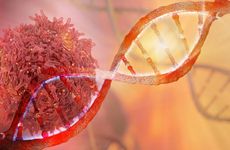
NEW YORK – A team led by investigators at the University of California, San Francisco has combined loss-of-function screening and comparative genomics to tease out genetic dependencies that distinguish human stem cells from those in nonhuman primates.
"Our findings demonstrate that human stem cells have evolved a distinct reliance on several cellular pathways, including increased dependence on genes mediating lysosomal signaling and increased robustness to re-enter cell cycle," senior and co-corresponding author Alex Pollen, a regeneration medicine, stem cell, and neurology researcher with UCSF, said in an email.
As they reported in Cell on Tuesday, the researchers relied on a series of genome-wide CRISPR-interference screens using growth analyses and high-throughput sequencing to search for loss-of-function changes affecting the proliferation of human or chimp pluripotent stem cells. Based on 16 CRISPR interference screens and essential and nonessential gene Dependency Map analyses, they went on to uncover 75 genes with species-specific growth effects in stem cells.
With a series of follow-up analyses, including additional gene knockdown, copy number variant, and RNA sequencing analyses on pluripotent stem cells from orangutans and from several human and chimpanzee representatives, the team found that genetic differences tended to fall on pathways involved in lysosomal signaling and cell-cycle progression.
Moreover, the team noted that the cell-cycle pathway changes unearthed in the CRISPR-based stem cell screen involved genetic shifts that appeared to be evolutionarily derived in humans relative to the ancestral forms found in chimp and orangutan stem cells. In particular, human cells seemed able to withstand the loss of three genes — CDK2, CCNE1, and CDK4 — that are essential to cell cycle function in chimps in pluripotent stem cells and in neural progenitor cells.
"Together, these findings reveal a stringent set of species-specific genetic dependencies that emerged in recent human and chimpanzee evolution," the authors reported.
The findings build on prior research looking at rare, large-effect mutations that distinguish humans and nonhuman primates, Pollen explained, noting that the current analyses focused on more subtle, "long tail" mutations with species-specific effects in the pluripotent stem cell type considered.
"The comparative loss-of-function approach we developed here allows us to study the influence of genetic background on gene regulatory network function," he said, "enabling us to weigh the impact of the haystack on cellular functions."
Based on their results so far, the investigators are interested in extending their approach to a wider set of cell types with more sensitive measurement techniques, Pollen explained, in an effort to understand human development more broadly and to dig into disease penetrance variation from one individual to the next.
"We expect that loss-of-function profiling can be extended to cellular models of genetic variation and disease risk within humans to identify shared vulnerabilities and convergent pathway level differences," Pollen and his coauthors wrote, noting that "our approach can be readily applied in differentiated cell types and interfaced with higher dimensional measurements of cell phenotypes, opening the door to future efforts for understanding molecular control of species differences across stages of development."
